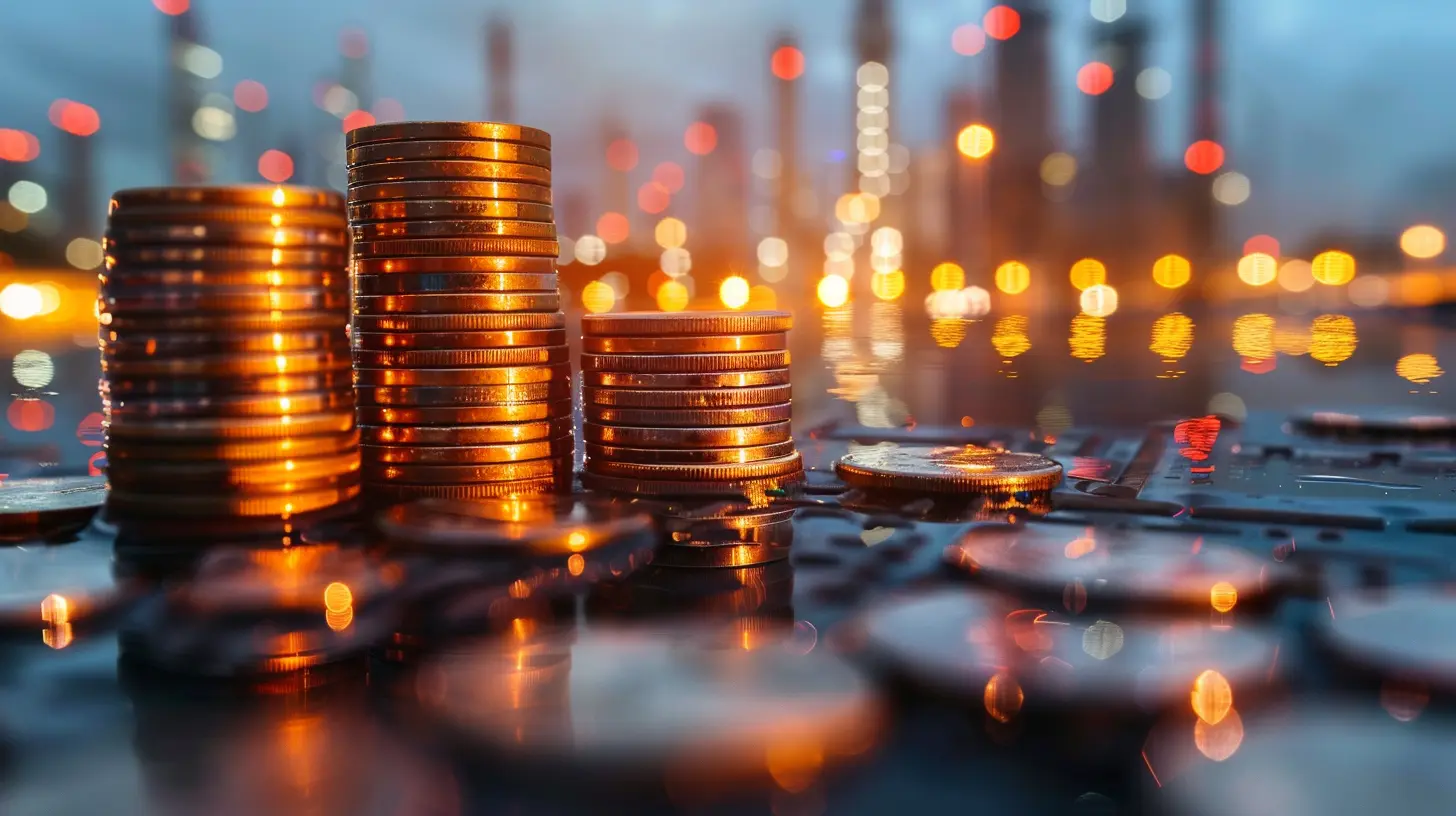Infrastructure Spending: A Key Driver for Market Performance
16 June 2025
When you hear the term "infrastructure spending," you might think of roads, bridges, and airports. But did you know that this kind of government investment can also be a game-changer for the stock market and the overall economy?
Infrastructure spending isn't just about fixing potholes or upgrading outdated transit systems—it's a powerhouse that fuels economic growth, creates jobs, and drives stock market performance. In this article, we'll break down why infrastructure spending matters, how it impacts the financial markets, and what it means for investors like you. 
What Is Infrastructure Spending?
At its core, infrastructure spending refers to the government’s investment in public works projects. This includes:- Roads, bridges, and highways
- Airports and rail systems
- Energy grids and water supply networks
- Broadband and digital connectivity
- Public transit and housing developments
Governments allocate billions—sometimes even trillions—toward these projects to build and maintain the physical systems that keep society running. But beyond the obvious benefits of better roads and faster internet, infrastructure investment plays a crucial role in driving economic and market performance. 
How Infrastructure Spending Fuels Economic Growth
1. Job Creation and Wage Growth
When governments invest in infrastructure, it immediately generates jobs. Think about it—construction workers, engineers, project managers, and suppliers all benefit directly. But the ripple effect doesn’t stop there. More jobs mean more disposable income, which boosts consumer spending and strengthens the economy from the ground up.More spending by consumers leads to higher demand for goods and services, fueling revenue growth for businesses. And when companies grow, their stock prices typically follow suit.
2. Increased Business Productivity
A well-maintained infrastructure improves efficiency for businesses. Better roads mean faster deliveries, upgraded ports facilitate smoother trade, and reliable energy grids ensure uninterrupted production. When businesses operate more efficiently, they become more profitable, which, in turn, drives stock prices higher.Imagine running an e-commerce business—if roads are congested and airports are outdated, shipping delays eat into your profits. But with improved infrastructure, operations become smoother, enhancing business earnings and, ultimately, market performance.
3. Boosting Investor Confidence
Markets thrive on confidence. When governments commit to large-scale infrastructure projects, investors see it as a signal of economic expansion. Increased spending suggests stability, fostering investor optimism, which can drive stock prices up.For instance, after the announcement of major infrastructure legislation, industries like construction, engineering, and materials often experience bullish trends as investors anticipate growth opportunities. 
The Impact of Infrastructure Spending on Different Sectors
While infrastructure investment benefits the entire economy, certain industries reap the biggest rewards.1. Construction and Engineering
It's no surprise that companies involved in infrastructure construction see an immediate boost. Giants in the construction sector benefit from government contracts, leading to robust revenue growth. Think of firms supplying cement, steel, and heavy machinery—when governments spend big, these industries boom.2. Transportation and Logistics
Upgraded highways, airports, and railways make transportation more efficient, reducing costs for logistics companies. Rail operators, trucking businesses, and airline carriers all benefit from improved infrastructure, making these sectors attractive for investors.3. Technology and Telecommunications
Infrastructure spending isn't just about roads and bridges anymore—digital infrastructure is a growing focus. Investments in broadband expansion and 5G networks fuel growth in tech and telecom companies, providing better services and opening up new revenue streams.4. Utilities and Renewable Energy
As governments push for sustainable infrastructure, renewable energy projects receive significant funding. Investments in wind farms, solar energy, and smart grids create opportunities for companies leading the green energy revolution. Investors looking for long-term gains often focus on this sector.
Infrastructure Spending and Stock Market Trends
Historical data shows that large infrastructure spending often precedes stock market rallies. Here’s why:1. Increased Consumer Spending – More jobs and higher wages drive consumer expenditure, benefiting retail, hospitality, and tech stocks.
2. Higher Corporate Earnings – Efficient infrastructure reduces costs and boosts profitability, increasing stock valuations.
3. Rising Demand for Raw Materials – Construction materials like steel, aluminum, and concrete see surging demand, benefiting commodities markets and industrial stocks.
4. Long-Term Economic Stability – Unlike short-term stimulus measures, infrastructure investments provide long-term economic benefits, keeping markets stable over time.
Challenges and Risks Involved in Infrastructure Spending
While infrastructure investment has numerous advantages, it's not without risks.1. Funding Challenges
Large-scale projects require significant capital, often leading to budget deficits or increased national debt. If not managed properly, excessive government borrowing can strain economies rather than strengthen them.2. Bureaucracy and Delays
Government projects often move at a snail's pace due to regulatory approvals and political roadblocks. Delays in execution can hinder the expected economic benefits.3. Inflationary Pressures
Massive infrastructure spending can sometimes lead to inflation, pushing up the cost of goods and materials. If inflation rises too quickly, it can negatively impact the economy and stock markets.4. Dependence on Political Decisions
Infrastructure investment depends on government policies and political will. Changes in leadership or shifts in political priorities can stall or cancel projects, affecting investor confidence.What Infrastructure Spending Means for Investors
For investors, understanding the relationship between infrastructure spending and market performance is key to making informed decisions. Here are a few takeaways:- Look Beyond Traditional Stocks – Infrastructure investments benefit not just construction firms but also sectors like technology, utilities, and transportation. Diversify your holdings accordingly.
- Monitor Government Policies – Keep an eye on policy announcements and infrastructure bills to anticipate which industries will benefit the most.
- Consider ETFs and REITs – Exchange-traded funds (ETFs) focused on infrastructure and Real Estate Investment Trusts (REITs) can provide exposure to this growing sector.
- Stay Patient – Infrastructure projects take years to complete, so long-term investors often see the biggest rewards.
Final Thoughts
Infrastructure spending is much more than just government expenditures—it's a catalyst for economic growth and a key driver of market performance. Whether you're an investor looking for the next big opportunity or simply someone hoping for smoother highways and faster Wi-Fi, infrastructure spending plays a role in shaping the financial landscape.So, the next time you see an announcement about a multi-billion-dollar infrastructure bill, remember—it’s not just about fixing roads. It’s about fueling market growth, creating jobs, and shaping the future of the economy.
all images in this post were generated using AI tools
Category:
Market TrendsAuthor:

Uther Graham
Discussion
rate this article
3 comments
Clarissa Mahoney
Great insights! It's clear that infrastructure spending plays a crucial role in stimulating economic growth and enhancing market performance. Excited to see its future impact!
June 20, 2025 at 11:51 AM

Uther Graham
Thank you! I appreciate your feedback and share your excitement about the potential impact of infrastructure spending on economic growth and market performance.
Zaren McConnell
This perspective on infrastructure spending is intriguing! It's fascinating how strategic investments can shape market dynamics and foster long-term economic growth.
June 17, 2025 at 3:48 AM

Uther Graham
Thank you! I'm glad you found the perspective intriguing. Strategic infrastructure investments indeed play a vital role in shaping market dynamics and driving sustainable economic growth.
Imani McKay
Investing in infrastructure is like giving your economy a new pair of shoes—suddenly, it's ready to run! Just remember, if the roads are bumpy, those shoes might need a serious upgrade!
June 16, 2025 at 4:33 AM

Uther Graham
Absolutely! Investing in infrastructure not only enhances economic efficiency but also lays the groundwork for sustainable growth. Smooth roads lead to faster progress!



